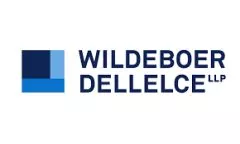It has been a suspenseful start to 2024. Our capital markets are still adjusting to higher interest rates, lower valuations, higher inflation, lower transaction volumes and fewer exit opportunities. At the same time, there remains committed capital in the system.
Capital call facilities operate to optimize and ultimately smooth current market conditions.
A capital call (or "subscription line") facility is a short-term loan bridging the time between a venture capital or private equity fund making a capital call and receiving capital contributions from its investors to finance a new investment.
To lenders, capital call facilities offer an opportunity to make returns on as-yet undeployed capital. To venture capital and private equity funds, they offer short-term liquidity in an otherwise constrained market. A capital call facility provides a fund with the liquidity it needs to make an investment much faster than through calling funds from its investors (which normally entails waiting out a notice period of 10+ business days). A capital call facility mitigates risk of delayed closings and logistical complications, which are higher over periods of financial and market uncertainty.
Here are some considerations for whether a capital call facility is right for a venture capital or private equity fund and its lenders.
Is the Fund Set Up for a Capital Call Facility?
When investors form a fund, they subscribe for fund units, which operate as a commitment to fund capital for a specified commitment period. During the commitment period, the fund can "call" for capital contributions from investors up to the amount of the capital commitment. Called capital is typically used to make new investments, for general working capital purposes or to cover certain fees and expenses.
The ideal fund formation documents contain features which provide comfort to lenders that a fund is creditworthy. In particular, the capital call mechanics of such documents will give a fund access to liquidity, and for lenders, serve as solid collateral. Those considering a capital call facility should look for the following features in a fund's formation documents:
- Borrowing: Authorization of the fund to borrow to make portfolio investments, for working capital purposes and to pay fees and expenses.
- Capital Calls: Authorization of the fund to (a) make capital calls to repay debt and interest; (b) pledge unfunded capital commitments; and (c) assign the right to deliver capital call notices via power of attorney and enforce investors' obligations to fund capital calls.
- Revocability: An irrevocable and unconditional obligation of investors to fund capital calls.
- Transferability: That investor units are non-transferable without prior consent.
- Commitment Period: The right to make capital calls to repay lenders during a suspension in the commitment period (often triggered by key-person provisions), both before and after the commitment period.
- Defaults: Clear and strong mechanisms for responding to an investor's failure to fund a capital call.
- No Third-Party Beneficiaries: Lender carve-out from a third-party beneficiary prohibition, so that lenders can step into the shoes of the general partners and exercise rights under the formation agreement.
Lenders may ask funds to add stronger lender protections into their formation documents to ensure lenders have the flexibility they need to make capital calls and ultimately use the proceeds of same as part of enforcing on security and repaying obligations owing to them. Investors may ask funds to provide more disclosure about the fund's use of capital call facilities and their impact on a fund's returns.
What is the Security?
A Top-Level Security Package
Capital call facilities are generally secured by the following:
- a pledge of investors' unfunded capital commitments and the right to enforce payment;
- a pledge of fund accounts where capital contributions are deposited; and
- a power of attorney to deliver capital call notices to investors if there is a default on the capital call facility.
Lenders will often employ a borrowing base test to confirm that the collateral value (i.e. uncalled capital) exceeds the outstanding borrowed amount by a certain percentage at any given time. In determining the value of collateral such as unfunded capital commitments, lenders will assess the creditworthiness of each individual investor and may choose to exclude less creditworthy investors from their borrowing base.
Lenders should be aware of and mitigate against potential erosion of the borrowing base as follows:
- Transferability: If a fund's units are transferable, the borrowing base test should be custom- structured to ensure that unit transfers do not erode the collateral.
- Excuse Rights: Exclusion provisions in the fund documents may "excuse" certain investors from making capital contributions at certain times. Lenders should exclude investors from the borrowing base when they are "excused" from making a capital contribution.
- Overcall: Overcall provisions limit an investor's obligation to cover capital contribution shortfalls created by defaulting investors. These provisions are common and will increase the security package's risk profile.
- Most Favoured Nation: Often found in investor side letters, Most Favoured Nation provisions allow an investor to adopt the most favourable terms that have been offered to any other investor. Lenders should be sure to review all side letters to understand which terms will apply to which investors so that they have the most comprehensive understanding of the composition of the borrowing base and the lenders' ultimate collateral.
In completing their due diligence, lenders should also review a fund's manager agreement, if any, to establish whether the power to call capital has been delegated to a manager. If it has, the manager should also be included as a party to the security documents.
A Bottom Security Package (NAV and Hybrid Facilities)
As funds mature and exhaust their committed capital, the borrowing base shrinks and capital call facilities are no longer widely available to them.
Instead of looking up to the fund investors to secure the capital call facility, lenders can look down to the net asset value of the fund's underlying portfolio investments. Lenders may also consider a hybrid facility for a fund's cashflow needs throughout its lifetime. A hybrid facility features a bespoke security package, drawing from elements of both top and bottom security packages.
As lenders and funds navigate the ever-changing markets, we expect to see an increase in the number of funds looking for liquidity options, new lenders enter the space and more creative hybrid facility packages.
The content of this article is intended to provide a general guide to the subject matter. Specialist advice should be sought about your specific circumstances.




